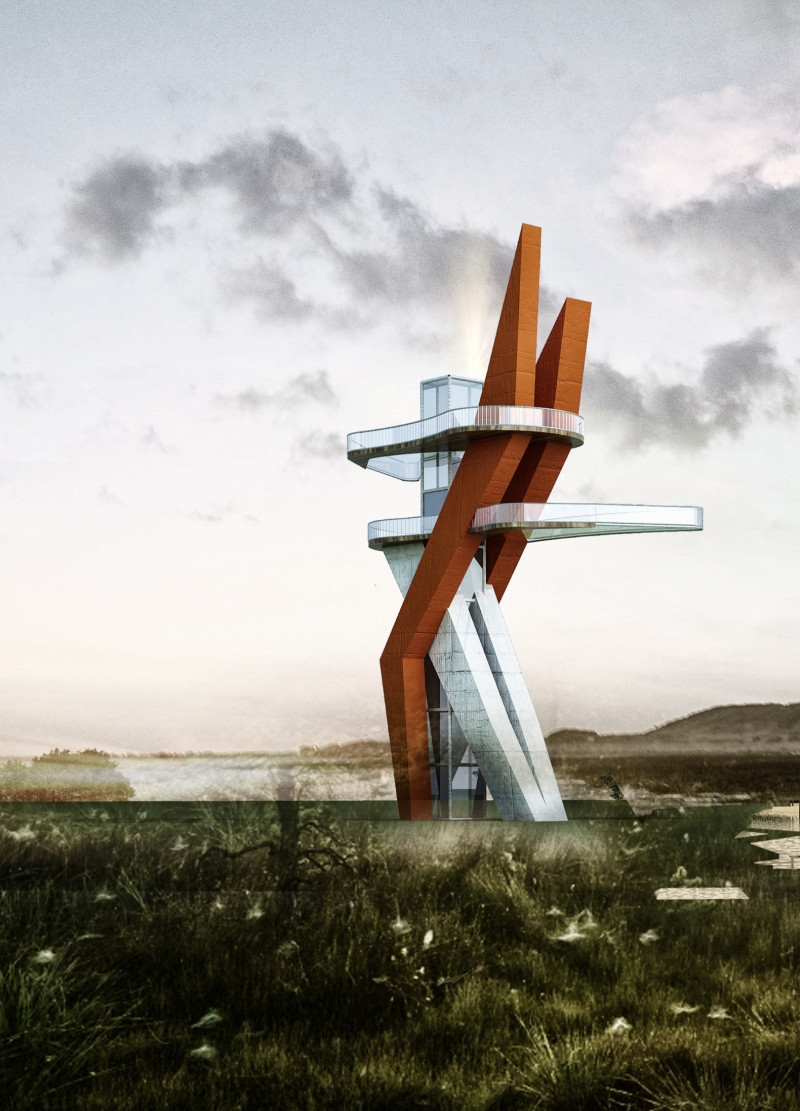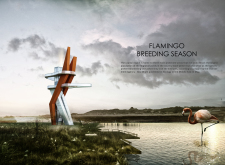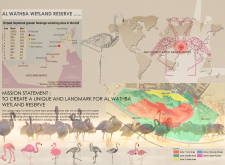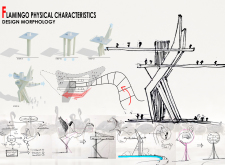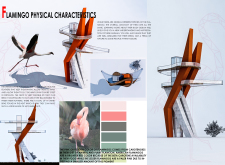5 key facts about this project
The design is located in the capital region of the Emirates and aims to support the migratory flamingo population during their breeding season. It features three main zones, each serving a specific purpose in balancing the needs of wildlife and human visitors. The overall design concept focuses on integrating natural habitats with spaces for interaction, promoting both conservation and awareness of the local environment.
Core Breeding Area
The core breeding area is dedicated to protecting the flamingos during their nesting period. It is designed to minimize human disturbance and provide a secure environment for the birds. This space is carefully separated from areas with higher visitor activity, allowing the flamingos to carry out their natural behaviors without interruption. The design fosters a sense of safety and tranquility crucial for the successful breeding of the species.
Visitor Engagement Zone
Next to the breeding area is the visitor engagement zone, which has been created as a space for exploration and education. This area invites visitors to learn about the flamingos and their habitats while maintaining a respectful distance from the breeding zone. Pathways and observation points are strategically placed, guiding visitors through informative displays and providing opportunities for close observation of the wildlife. It helps to foster an appreciation for nature and the importance of conservation.
Service Access Zone
The service access zone is strategically included to support maintenance and operational needs without interfering with wildlife or visitor experiences. This area is essential for staff operations while ensuring minimal disruption to both the habitat and the visitors. Its design keeps service entry points clear and unobtrusive, showing how architecture can effectively balance functional requirements with ecological considerations.
Buffer Zone
A buffer zone rounds out the design, acting as a protective space between human activity and wildlife habitats. This area is vital for safeguarding the breeding and visitor zones, providing a natural barrier that lessens the impact of human presence. The careful arrangement of space highlights the need for ecological balance, allowing both wildlife and visitors to coexist harmoniously.
The overall design employs natural forms and landscaping to enhance the relationship between built structures and the surrounding environment. This attention to detail strengthens the narrative of coexistence, where the design not only meets practical needs but also celebrates the area's rich biodiversity. The architecture serves as a framework for understanding and appreciating the delicate balance of nature.


